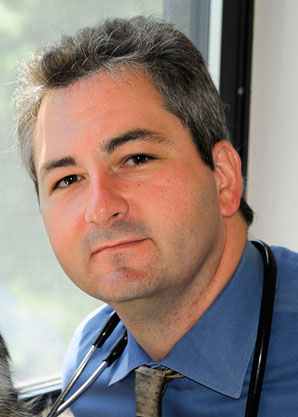
For the last few days, I've followed the press response to the death of Lorraine Bayless, an 87-year-old Bakersfield resident who died after a nurse at Glenwood Gardens, the independent living community where she resided, refused to perform CPR.
None of us know all the important specifics of what happened that day, but as a geriatrician and Brown University health care researcher with an interest in end-of-life care, I think the care (or lack of care) provided by the nurse at this independent living facility raises several important questions that should be addressed by police, regulators, and health care professionals in the near future.
But the case also teaches us some valuable lessons about the responsibilities we have to ourselves and our loved ones when entering facility care.
Much of the outrage directed at Glenwood Gardens concerns their policies to not conduct CPR in medical emergencies. Independent living facilities and assisted living faculties often advertise their medical/nursing care as a reason to place mom or dad into their facility. Many such facilities routinely promote the presence of 24-hour nursing availability, assistance with medication delivery, and the provision of custodial and rehabilitation services in addition to room and board.
With such claims, consumers might understandably, but erroneously, believe that these homes are health care facilities. The reality, however, is that they are not and situations like the one that apparently occurred in Bakersfield occur with much greater frequency than one might suspect.
Unlike nursing homes, these facilities can often do what they like without fear of regulation or oversight. As such, when one makes the difficult decision to turn over hard-earned retirement money to a facility such as Glenwood Gardens, reading the fine print becomes critically important as does asking important questions:
- Will they evacuate mom in case of emergency?
- Will they provide emergency or routine medical care?
The Bakersfield death also exemplifies just how important it is to document one’s end-of-life wishes.
California is one of many states around the United States that use a uniform end-of-life form that is recognized across the spectrum of health care facilities. The Physicians Orders for Life-Sustaining Treatment (POLST) form gives clear direction to first responders and medical professionals about the goals of care at the end of life. When such a form has been filled out by a resident and is available to the staff, discussions about whether a facility nurse should or should not perform CPR might be unnecessary.
For example, if a resident has said she doesn't want such life-saving measures, there is no need to debate whether they should be performed. Unfortunately many states, including my home state of Rhode Island, do not have a uniform end of life form — that really needs to be rectified in the immediate future to prevent these types of situations.
Finally, the media coverage around the Bakersfield death also casts a spotlight on the efficiency of CPR, particularly among the elderly.
In general, people carry a misconception about the success of CPR that is borne out of watching television. A famous study published in the New England Journal of Medicine in 1996 noted that the efficacy of CPR on several well-regarded television programs such as ER was 75 percent. The reality is much more sobering. Several studies suggest that the likelihood of survival to one month after cardiac arrest is less than 5 percent in the non-hospital setting, with rates considerably lower among the elderly with chronic medical conditions.
Are these dismal statistics a reason to defer CPR, particularly among the frail elderly? Studies suggest that the majority of our elderly feel that way. Nevertheless, this is a decision that our health care system leaves to the individual. Unfortunately, many of us fail to have these discussions with our health care providers and our families or significant others.
One of the greatest gifts you can leave to a family member is direction regarding health care decisions at the end of life. Perhaps a little more guidance in this case might have obviated the need to dissect whether or not a nurse at an independent living should have provided CPR to a dying woman.
Dr. David Dosa is associate professor of medicine and health services, policy and practice at Brown University and the Providence VA Medical Center.
